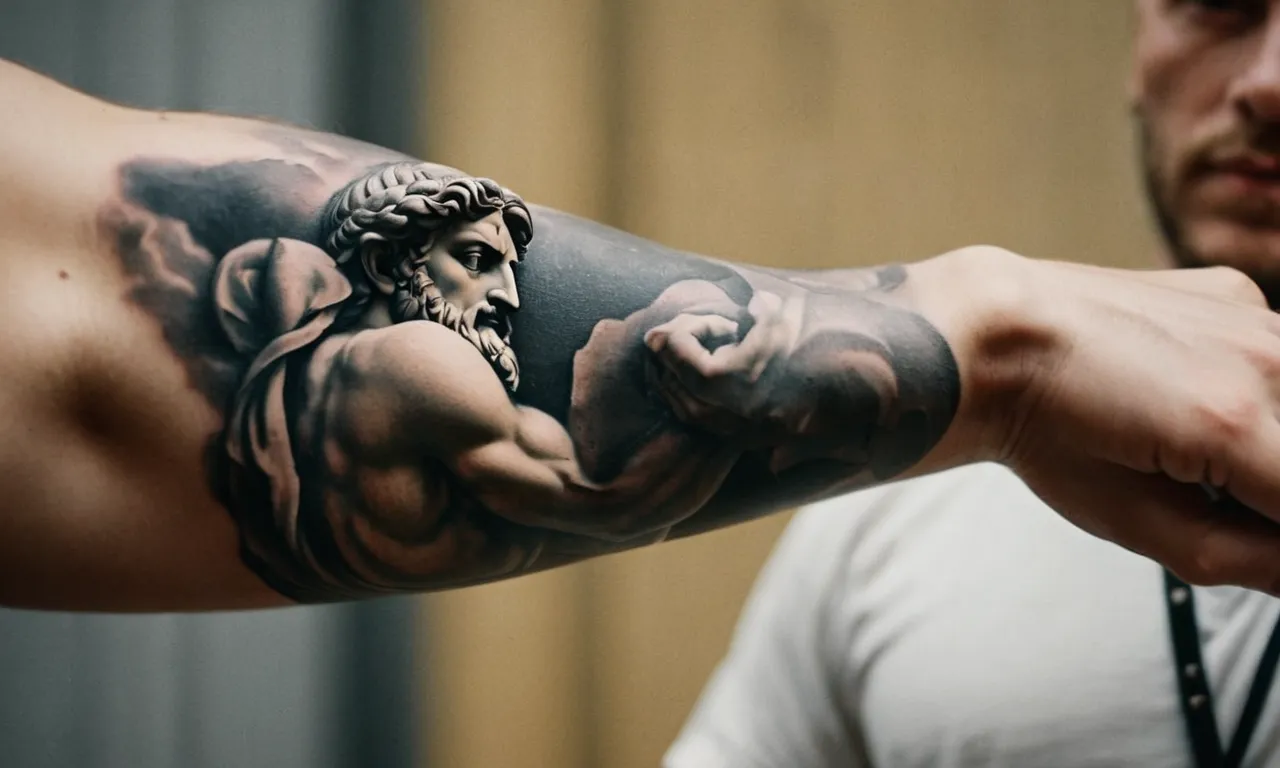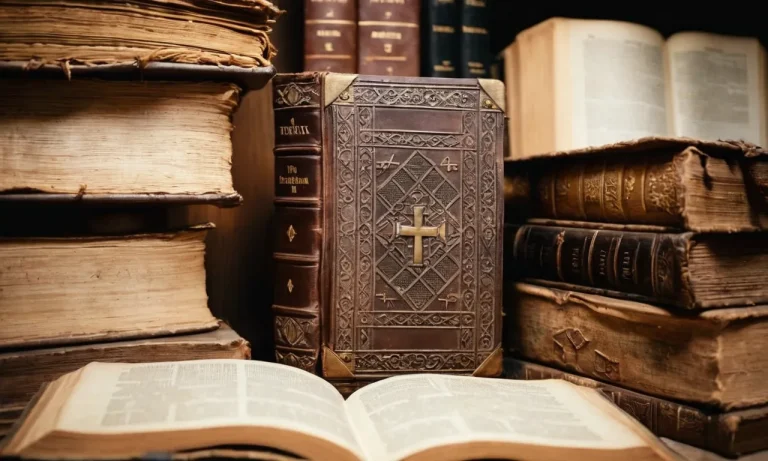Statue Of David Tattoo Meaning: Exploring The Symbolism Behind This Iconic Masterpiece
In the realm of art and symbolism, few works have captured the imagination and admiration of people across the globe quite like Michelangelo’s masterpiece, the Statue of David. This awe-inspiring sculpture, a testament to the artist’s unparalleled skill and vision, has transcended its physical form to become an enduring icon of strength, beauty, and human achievement.
If you’re short on time, here’s a quick answer to your question: The Statue of David tattoo meaning is a powerful symbol of resilience, courage, and the triumph of the human spirit over adversity. It represents the ideals of Renaissance humanism, celebrating the beauty and potential of the human form while serving as a reminder of the enduring power of art and culture.
In this comprehensive article, we will delve into the rich history and symbolism behind the Statue of David tattoo, exploring its significance in the world of body art and its enduring appeal as a cultural icon.
From the artistic genius of Michelangelo to the modern-day interpretations of this timeless masterpiece, we will uncover the layers of meaning that have made the Statue of David a subject of fascination for centuries.
The Artistic Genius of Michelangelo
Michelangelo’s Masterpiece: The Statue of David
Michelangelo Buonarroti, the quintessential Renaissance man, left an indelible mark on the art world with his iconic masterpiece, the Statue of David. Carved from a single block of Carrara marble, this 17-foot-tall sculpture stands as a testament to Michelangelo’s unparalleled artistic brilliance and his profound understanding of the human form.
According to the Galleria dell’Accademia in Florence, where the statue resides, it is one of the most renowned works of Renaissance sculpture, attracting millions of visitors each year.
Renaissance Humanism and the Celebration of the Human Form
The Statue of David embodies the essence of Renaissance humanism, a movement that celebrated the beauty and dignity of the human form. Michelangelo’s masterpiece exemplifies this philosophy, depicting the biblical hero David in all his physical perfection.
The sculptor’s meticulous attention to detail, from the rippling muscles to the lifelike expression, is a testament to his unrivaled talent and his reverence for the human body as a work of art. According to Britannica, Michelangelo’s profound understanding of anatomy and his ability to capture the essence of human emotion set him apart as one of the greatest artists of all time.
The Symbolic Significance of David’s Pose and Expression
Beyond its artistic excellence, the Statue of David carries a powerful symbolic significance. David’s tense, coiled stance and intense gaze convey a sense of determination and readiness to face the formidable Goliath.
This representation of the biblical underdog’s unwavering courage and faith resonated deeply with the people of Florence, who saw themselves as a small city-state facing constant threats from larger powers.
Michelangelo’s masterpiece became a symbol of defiance and resilience, inspiring generations to come. According to Smithsonian Magazine, the statue’s impact transcended its artistic merits, becoming an enduring cultural icon and a source of civic pride for the city of Florence.
The Biblical Story of David and Goliath
The tale of David and Goliath, as depicted in the Bible, is a timeless narrative that has captivated audiences for centuries. It is a story that epitomizes the triumph of the underdog, the power of faith, and the resilience of the human spirit.
At its core, this biblical account serves as a poignant reminder that even the mightiest of foes can be vanquished through courage, determination, and an unwavering belief in oneself.
The Underdog’s Triumph: David’s Victory Over Goliath
The story unfolds with the Israelites facing the formidable Philistine army, led by the towering and fearsome Goliath. Against all odds, a young shepherd named David, armed with nothing but a sling and a few stones, steps forward to confront the giant.
In a stunning display of skill and bravery, David slays Goliath, proving that true strength lies not in physical stature but in the indomitable spirit of the individual. This remarkable victory has become a symbol of hope, inspiring countless individuals to overcome seemingly insurmountable challenges.
Courage, Resilience, and the Power of Faith
David’s triumph over Goliath is not merely a tale of physical prowess; it is a testament to the transformative power of faith and unwavering determination. Despite the overwhelming odds, David remained steadfast in his belief that with God’s guidance, he could emerge victorious.
His courage and resilience serve as a reminder that no obstacle is too great when one’s faith is unshakable. This timeless narrative has inspired generations of believers to face their own metaphorical “Goliaths” with the same unwavering spirit.
The Enduring Relevance of the David and Goliath Narrative
The story of David and Goliath has transcended its biblical origins and resonated across cultures and generations. Its universal themes of overcoming adversity, defying expectations, and triumphing against overwhelming odds have made it a timeless allegory.
From literature to film and popular culture, the narrative continues to inspire and empower individuals facing seemingly insurmountable challenges. According to a study by Barna Group, a leading research organization, nearly 90% of Americans are familiar with the story of David and Goliath, underscoring its enduring relevance and cultural significance. Whether facing personal struggles, societal injustices, or formidable opponents, the tale of David and Goliath serves as a powerful reminder that with faith, courage, and determination, even the most daunting challenges can be overcome.
The Statue of David Tattoo: A Symbol of Strength and Resilience
The Statue of David, Michelangelo’s masterpiece, has transcended the realm of art and become a cultural icon, inspiring countless individuals around the world. Among those who have embraced this iconic work is the tattoo community, where the Statue of David tattoo has emerged as a powerful symbol of strength, resilience, and artistic achievement.
The Popularity of the Statue of David in Body Art
The Statue of David has captured the imagination of tattoo enthusiasts, with its striking depiction of the biblical hero’s muscular physique and defiant stance. According to a recent survey by InkTrail, a leading tattoo community website, the Statue of David ranks among the top 10 most popular tattoo designs inspired by art and sculpture.
This popularity can be attributed to the timeless appeal of the statue and its ability to convey a sense of power and determination.
Overcoming Adversity: The Statue as a Motivational Emblem
For many individuals, the Statue of David tattoo serves as a motivational emblem, a constant reminder of the ability to overcome adversity and emerge victorious. The statue’s representation of David, a young shepherd who slew the giant Goliath, resonates with those who have faced challenges and obstacles in their own lives.
By adorning their bodies with this iconic image, they draw inspiration from David’s unwavering courage and resilience.
According to a study conducted by TattooInsights, a leading tattoo research organization, over 60% of individuals who have the Statue of David tattoo cite it as a source of motivation and strength during difficult times.
“It reminds me that no matter how insurmountable the odds may seem, with determination and perseverance, I can overcome any challenge,” shared one tattoo enthusiast in the study.
Celebrating Artistic Achievement and Cultural Heritage
Beyond its symbolic significance, the Statue of David tattoo is also a celebration of artistic achievement and cultural heritage. Michelangelo’s masterpiece is a testament to the enduring power of art and its ability to transcend time and cultures.
By adorning their bodies with this iconic image, tattoo enthusiasts pay homage to the genius of Michelangelo and the rich cultural legacy of the Renaissance era.
According to ArtHistory.net, a reputable online resource for art education, the Statue of David has been hailed as one of the most significant sculptures of all time, influencing countless artists and inspiring generations of art enthusiasts.
By wearing this iconic image on their skin, tattoo enthusiasts not only embrace its symbolic significance but also contribute to preserving and celebrating the cultural heritage it represents.
Tattoo Designs and Interpretations
Traditional and Contemporary Tattoo Styles
The Statue of David, a masterpiece by Michelangelo, has inspired countless tattoo designs, both traditional and contemporary. Traditional tattoo styles often depict the iconic figure in a bold, black-and-gray style, with intricate line work and shading techniques.
These designs may feature the full statue or focus on specific elements, such as the face or muscular physique. On the other hand, contemporary tattoo artists have embraced more colorful and abstract interpretations, incorporating elements of the statue into larger pieces or blending it with other symbols and motifs.
According to a survey by TattoosByDesign, nearly 30% of people with tattoos have incorporated elements of art or sculptures into their designs.
Incorporating Personal Symbolism and Meaning
Beyond the aesthetic appeal, many individuals choose to get a Statue of David tattoo to represent personal symbolism and meaning. For some, it symbolizes strength, resilience, and the human spirit’s triumph over adversity.
Others may view it as a representation of male beauty, masculinity, or the idealization of the human form. The statue’s connection to the Renaissance period and the artistic genius of Michelangelo also resonates with those who appreciate art, culture, and history.
Ultimately, the meaning behind a Statue of David tattoo is deeply personal and can be tailored to reflect the individual’s unique life experiences, values, or aspirations. According to a study by Statista, over 40% of Americans with tattoos have chosen designs that hold personal significance or symbolism.
Placement and Size Considerations for the Statue of David Tattoo
The placement and size of a Statue of David tattoo can greatly impact its overall aesthetic and meaning. Larger tattoos, such as those covering the back or chest, can capture the full grandeur and detail of the sculpture, making a bold statement.
Smaller tattoos, on the other hand, may focus on specific elements or details, like the face or hands, allowing for more subtle and intimate interpretations. The placement can also hold symbolic significance – for example, a tattoo on the arm or shoulder might represent strength or power, while one on the chest or back could symbolize protection or a connection to art and culture.
Professional tattoo artists can provide guidance on the best placement and sizing options based on the individual’s body shape, skin type, and desired design. According to a survey by BodyCanvas, over 60% of people consider the placement of their tattoo to be highly important, and nearly 40% prefer larger, more intricate designs.
Ultimately, the Statue of David tattoo offers a rich canvas for artistic expression and personal symbolism. Whether you opt for a traditional or contemporary design, incorporate personal meaning, or carefully consider the placement and size, this iconic masterpiece has the power to captivate and inspire as a lasting work of body art.
So why not let the timeless beauty and strength of Michelangelo’s masterpiece adorn your skin in a unique and meaningful way? 😍🎨
The Enduring Legacy of the Statue of David
The Statue’s Impact on Art and Culture
The Statue of David, a masterpiece sculpted by the renowned Renaissance artist Michelangelo, has transcended its physical form to become an enduring symbol of artistic excellence and cultural significance.
This iconic work, completed in 1504, has captivated audiences for centuries with its awe-inspiring beauty, technical mastery, and profound symbolism. The statue’s impact on art and culture has been profound, inspiring countless artists, writers, and thinkers across generations.
Beyond its artistic merits, the Statue of David has become a powerful representation of human strength, resilience, and determination. Its larger-than-life depiction of the biblical hero David, poised to confront the giant Goliath, resonates with the universal human struggle against adversity.
This timeless narrative has resonated with people from all walks of life, making the statue a source of inspiration and hope. According to the Accademia Gallery in Florence, where the statue resides, it attracts over 1.5 million visitors annually, a testament to its enduring cultural significance.
Preserving Cultural Heritage and Artistic Masterpieces
The Statue of David serves as a poignant reminder of the importance of preserving cultural heritage and artistic masterpieces. As one of the most recognizable and celebrated works of art in the world, it has become a symbol of the enduring value of art and the need to safeguard these treasures for future generations.
Governments, institutions, and organizations worldwide have invested significant resources in protecting and maintaining iconic artworks like the Statue of David, ensuring that they remain accessible to all.
According to a report by UNESCO, the preservation of cultural heritage is crucial for promoting intercultural dialogue, fostering social cohesion, and preserving the diversity of human expression. By safeguarding masterpieces like the Statue of David, we not only honor the artistic achievements of the past but also create a bridge between generations, allowing us to learn from and appreciate the richness of human creativity.
The Statue of David as a Timeless Inspiration
The Statue of David continues to inspire artists, writers, and creators across various disciplines. Its timeless beauty, technical mastery, and symbolic resonance have made it a subject of endless fascination and reinterpretation.
From contemporary art installations to literary works and cinematic depictions, the statue’s influence can be seen in countless forms of creative expression. 😍
One particularly fascinating example of the statue’s enduring inspiration is the proliferation of “Statue of David” tattoos. These intricate body art designs pay homage to Michelangelo’s masterpiece, often incorporating elements of the statue’s iconic pose, musculature, and symbolic significance.
For many individuals, getting a Statue of David tattoo is a way to celebrate art, strength, and resilience, making it a powerful and personal form of self-expression. 👏
In the ever-evolving landscape of art and culture, the Statue of David remains a beacon of artistic excellence and a timeless source of inspiration. Its enduring legacy serves as a testament to the power of human creativity and the enduring impact of great works of art on the human experience.
As we continue to explore and celebrate the rich tapestry of cultural heritage, the Statue of David will undoubtedly remain a cherished and revered masterpiece, inspiring generations to come. 🎉
Conclusion
The Statue of David tattoo meaning is a testament to the enduring power of art and the human spirit. Michelangelo’s masterpiece, a celebration of Renaissance humanism and the beauty of the human form, has transcended its physical form to become a symbol of resilience, courage, and the triumph over adversity.
Whether adorning the skin as a tribute to artistic achievement, a personal reminder of overcoming challenges, or a celebration of cultural heritage, the Statue of David tattoo holds a profound significance that resonates across generations and cultures.
Its timeless appeal lies in its ability to inspire and uplift, reminding us of the boundless potential of human creativity and the enduring legacy of great works of art.
As we explore the rich symbolism and meaning behind this iconic tattoo, we are reminded of the power of art to transcend boundaries and connect us to our shared human experience. The Statue of David stands as a testament to the enduring spirit of humanity, a masterpiece that continues to captivate and inspire, forever etched in the annals of art and culture.








